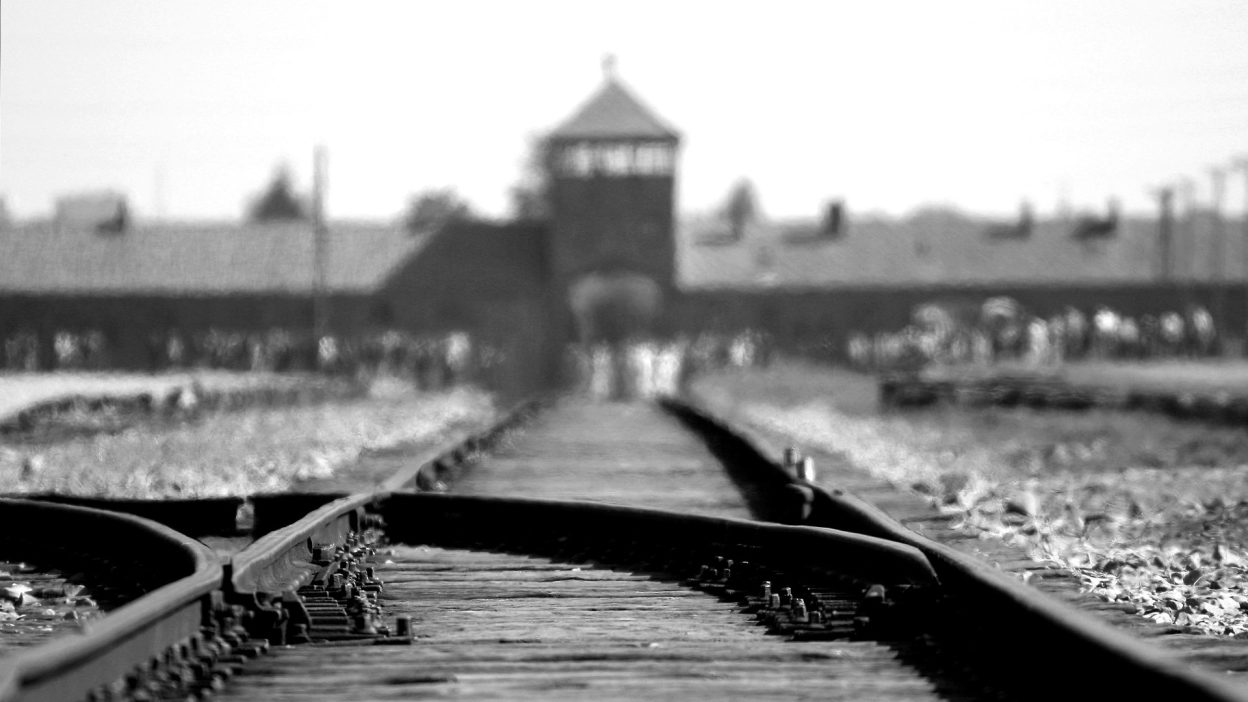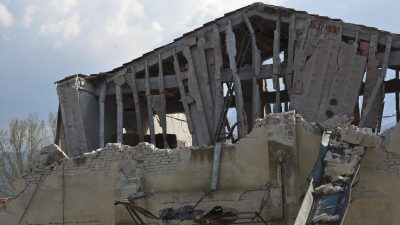Remembering The Tragedy Of 6 Million Jews And Millions More
The Holocaust, one of the darkest chapters in human history, was the systematic genocide of approximately 6 million Jews by Nazi Germany and its collaborators between 1941 and 1945. This atrocity, orchestrated under the leadership of Adolf Hitler, also claimed the lives of millions of others, including Romani people, Soviet prisoners of war, disabled individuals, and non-Jewish Poles. The Nazis’ ideology of racial superiority, their hatred for those they deemed “inferior,” and their desire to create a “pure” Aryan society led to the extermination of entire communities across Europe. The importance of remembering the Holocaust cannot be overstated—it serves as a stark reminder of the consequences of unchecked hatred and serves as a warning to future generations to never allow such atrocities to occur again.
References:
- United States Holocaust Memorial Museum. (n.d.). “The Holocaust.” https://www.ushmm.org/wlc/en/article.php?ModuleId=10005143
- History.com Editors. (2020, August 21). “Holocaust.” History.com. https://www.history.com/topics/world-war-ii/the-holocaust
Why Were Jews Targeted?
Anti-Semitism—prejudice against Jewish people—had existed in Europe for centuries, but it reached a peak under Nazi rule, where it became a central part of their ideology. Hitler and the Nazi Party blamed Jews for Germany’s defeat in World War I (1914-1918) and the resulting economic hardships. By using propaganda in newspapers, films, radio broadcasts, and even in the educational system, the Nazis spread false claims that Jews were responsible for societal problems. By 1933, there were approximately 9.5 million Jews living in Europe, with large populations in Poland, the Soviet Union, Germany, and other Central and Eastern European countries. As Nazi influence spread across Europe, the safety and survival of the Jewish people became increasingly uncertain.
The rise of Nazi power and the hate-fueled ideology they promoted led to the implementation of discriminatory laws, widespread violence, and ultimately, genocide. Jews were labeled as subhuman and systematically excluded from every aspect of public life. They were forced into ghettos, stripped of their civil rights, and ultimately sent to concentration camps, where the vast majority of them perished.
References:
- Racial Policy of Nazi Germany. (2021). “The Evolution of Nazi Anti-Semitism.” https://encyclopedia.ushmm.org/content/en/article/nazi-racism-an-overview
- The Holocaust Explained. (n.d.). “Anti-Semitism in Nazi Germany.” https://www.theholocaustexplained.org
Hitler’s Rise to Power and Anti-Jewish Laws
On January 30, 1933, Adolf Hitler was appointed Chancellor of Germany, marking the beginning of a terrifying era for Jews and other marginalized groups. The Nazis quickly began to enact laws aimed at dehumanizing and marginalizing Jewish citizens. In 1935, the Nuremberg Laws were passed, which stripped Jews of their German citizenship and prohibited marriages or relationships between Jews and non-Jews. These laws were the first legal steps taken toward the isolation and persecution of Jews.
By 1938, more than 1,400 anti-Jewish laws had been passed in Germany. These laws forced Jews out of businesses, schools, and professional life. In November 1938, the Kristallnacht or “Night of Broken Glass” occurred, which marked a turning point in Nazi anti-Jewish policies. During Kristallnacht, synagogues were burned, Jewish businesses were destroyed, and over 30,000 Jewish men were arrested and sent to concentration camps. The violence was unprecedented and showed the world the true extent of Nazi hatred.
Many Jews tried to flee Germany, but other countries, including the United States and the United Kingdom, imposed restrictive immigration policies, leaving millions trapped in Nazi-controlled territories.
References:
- United States Holocaust Memorial Museum. (n.d.). “Nuremberg Laws.” https://www.ushmm.org/wlc/en/article.php?ModuleId=10007303
The Final Solution: A Plan for Genocide
The Nazis’ plan to exterminate all Jews in Europe, known as the Final Solution, was formalized during the Wannsee Conference on January 20, 1942. The plan called for the systematic murder of all Jews within Nazi-occupied Europe, and although mass killings had already begun in 1941, this meeting marked the beginning of industrialized mass murder. The Nazis began to establish concentration camps and extermination camps to carry out the genocide.
The largest and most infamous of these camps was Auschwitz-Birkenau, located in occupied Poland, where an estimated 1.1 million people were murdered. Other infamous camps included Treblinka, Belzec, and Sobibor, where more than 2.7 million Jews were killed. Auschwitz alone accounted for the majority of these deaths, using gas chambers, starvation, forced labor, and mass shootings as methods of execution.
The Nazis also targeted other groups they deemed “undesirable,” including Romani people (Gypsies), Soviet prisoners of war, disabled individuals, and political opponents. An estimated 500,000 Romani people were murdered, along with millions of Soviet prisoners of war, including nearly 3 million Soviet soldiers, many of whom died in camps or through executions.
References:
- United States Holocaust Memorial Museum. (n.d.). “The Final Solution.” https://www.ushmm.org/wlc/en/article.php?ModuleId=10005142
Life in the Concentration Camps
Life inside the concentration camps was horrific beyond imagination. Upon arrival, 75% to 90% of Jews were sent directly to gas chambers to be murdered immediately. The remaining prisoners were subjected to forced labor, starvation, disease, and inhumane medical experiments. Those who were able to survive the initial selection faced a life of unimaginable suffering. The survivors often lived in overcrowded barracks, where poor sanitation and inadequate food rations contributed to rampant diseases such as typhus and dysentery.
One of the most infamous Nazi doctors, Josef Mengele, conducted horrific experiments on prisoners, particularly on twins. Around 1,500 sets of twins were used as guinea pigs for these experiments, where Mengele subjected them to cruel surgeries, injections, and other medical procedures without anesthesia. The goal was to find ways to enhance the Aryan race, but instead, thousands of innocent lives were destroyed in the process.
Conditions in the camps were so brutal that many prisoners died from starvation or disease. By the time the camps were liberated, the survivors were often emaciated, weighing as little as 30 kg (66 lbs) and suffering from severe physical and psychological trauma.
References:
- United States Holocaust Memorial Museum. (n.d.). “The Concentration Camps.” https://www.ushmm.org/wlc/en/article.php?ModuleId=10005199
- The Holocaust Explained. (n.d.). “Medical Experiments in the Concentration Camps.” https://www.theholocaustexplained.org
Resistance and Complicity
While many local officials and citizens collaborated with the Nazis, there were also instances of brave resistance. In 1943, the Warsaw Ghetto Uprising took place, when a group of 750 Jewish fighters resisted Nazi forces for nearly a month. They fought back with whatever weapons they could find, but were ultimately overwhelmed. Nevertheless, their courage became a symbol of Jewish defiance.
In addition to the Jewish resistance, non-Jewish heroes risked their lives to save Jews. Oskar Schindler, a German businessman, used his position to save more than 1,000 Jewish lives, employing them in his factories to protect them from the death camps. Other heroes, such as Raoul Wallenberg and Chiune Sugihara, worked tirelessly to issue visas and provide safe passage for Jews escaping Nazi persecution.
The Liberation of the Camps
As the Allies advanced through Europe, they began liberating the concentration camps. The Soviet Army liberated Auschwitz on January 27, 1945, discovering mass graves, gas chambers, and the remains of thousands of murdered prisoners. The U.S. and British forces liberated other major camps, including Bergen-Belsen, Dachau, and Buchenwald, in April 1945. By then, over 6 million Jews and 5 million non-Jews had been murdered in the Holocaust.
The liberating forces were shocked by the horrors they encountered. The survivors, many of whom had been starving for months, were barely recognizable and suffering from severe trauma. The survivors faced an uncertain future as they struggled to rebuild their lives, often with no homes, families, or resources left.
References:
- United States Holocaust Memorial Museum. (n.d.). “Liberation of the Camps.” https://www.ushmm.org/wlc/en/article.php?ModuleId=10007313
The Nuremberg Trials and Accountability
After the war, many of the leading figures of the Nazi regime were brought to justice at the Nuremberg Trials between 1945 and 1946. 24 top Nazi officials were tried for war crimes, crimes against humanity, and genocide. Of those, 12 were sentenced to death, 3 received life sentences, and 4 were given long prison terms. These trials were the first time that individuals were held accountable for genocide on such a scale.
Despite the convictions, many lower-ranking Nazis managed to escape justice by fleeing to countries like Argentina, Brazil, and Paraguay. Adolf Eichmann, one of the main architects of the Holocaust, was captured in 1960 in Argentina and was brought to Israel, where he was tried and executed in 1962.
References:
- United States Holocaust Memorial Museum. (n.d.). “Nuremberg Trials.” https://www.ushmm.org/wlc/en/article.php?ModuleId=10007058
- BBC History. (n.d.). “The Nuremberg Trials.” https://www.bbc.co.uk/history/worldwars/wwtwo/nuremberg_article_01.shtml
The Holocaust’s Global Impact
The Holocaust had a profound impact on the world and reshaped the global approach to human rights. In 1948, the State of Israel was established as a homeland for Jewish survivors of the Holocaust. The United Nations passed the Genocide Convention in 1948, which declared genocide to be an international crime, and the Universal Declaration of Human Rights was adopted in 1948 to protect the rights and dignity of all people.
To ensure that the memory of the Holocaust is preserved, over 400 Holocaust memorials and museums have been built worldwide. These institutions, including the United States Holocaust Memorial Museum in Washington, D.C., and Yad Vashem in Israel, serve as reminders of the horrors of the Holocaust and educate future generations about the importance of tolerance, human dignity, and respect for all people.
References:
- United Nations. (n.d.). “The Genocide Convention.” https://www.un.org/en/genocideprevention/Convention.shtml
Conclusion
The Holocaust stands as one of the most catastrophic events in human history, marking the systematic murder of 6 million Jews and millions of others. It is our responsibility to ensure that such a tragedy is never repeated. The survivors’ stories, the memorials, and the lessons of the Holocaust continue to teach us the importance of tolerance, vigilance, and standing against hate. As the survivors often say, “Never again.”
Some yt links:
WW2: The Emergence of Nazism and the Holocaust | The Jewish Story | Unpacked
Did the Nazis really kill 6 Million Jews?
https://www.youtube.com/watch?v=tA_uJOnAnoQ How The Nazis Brainwashed The German People To Support The Final Solution




